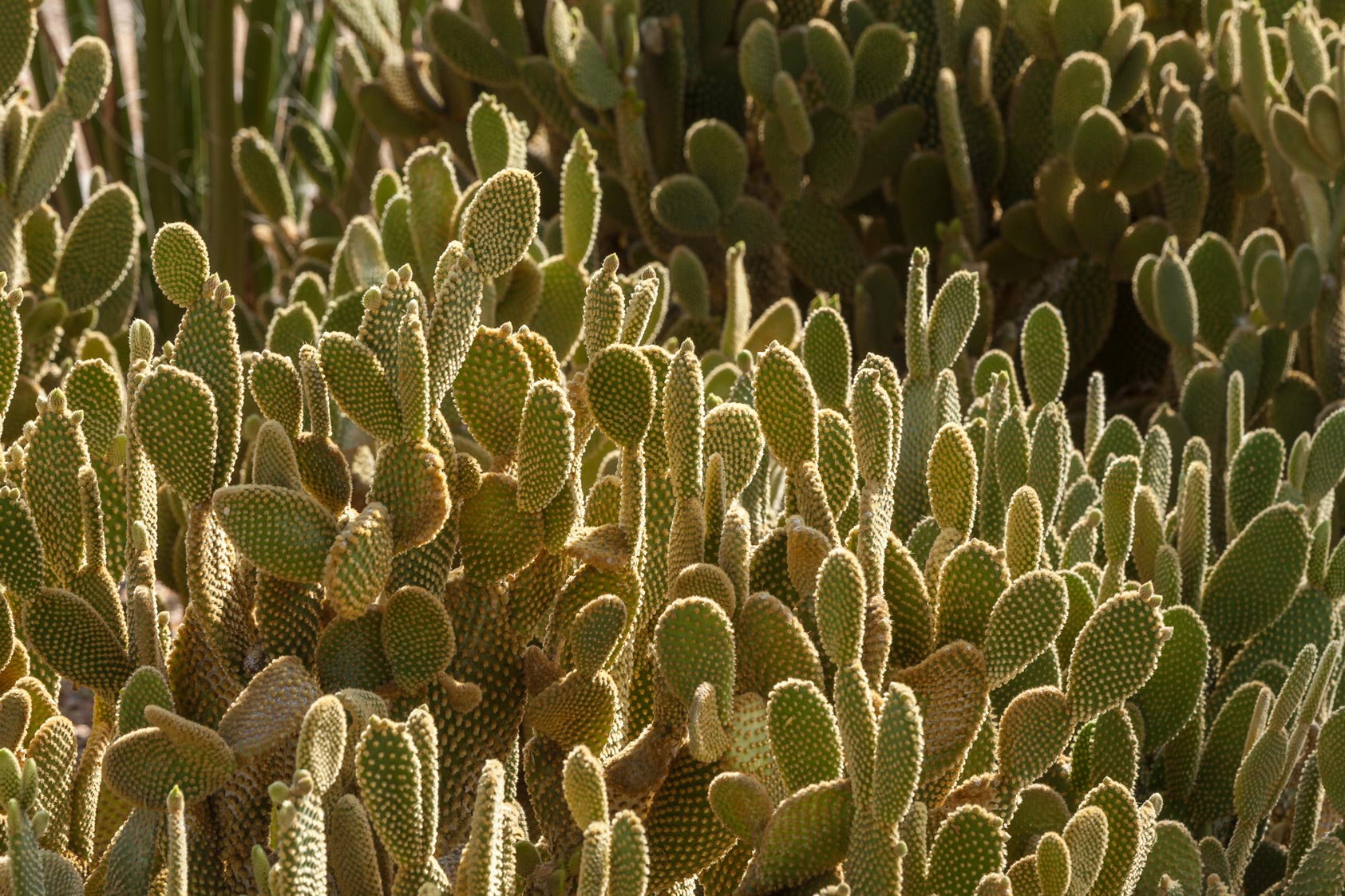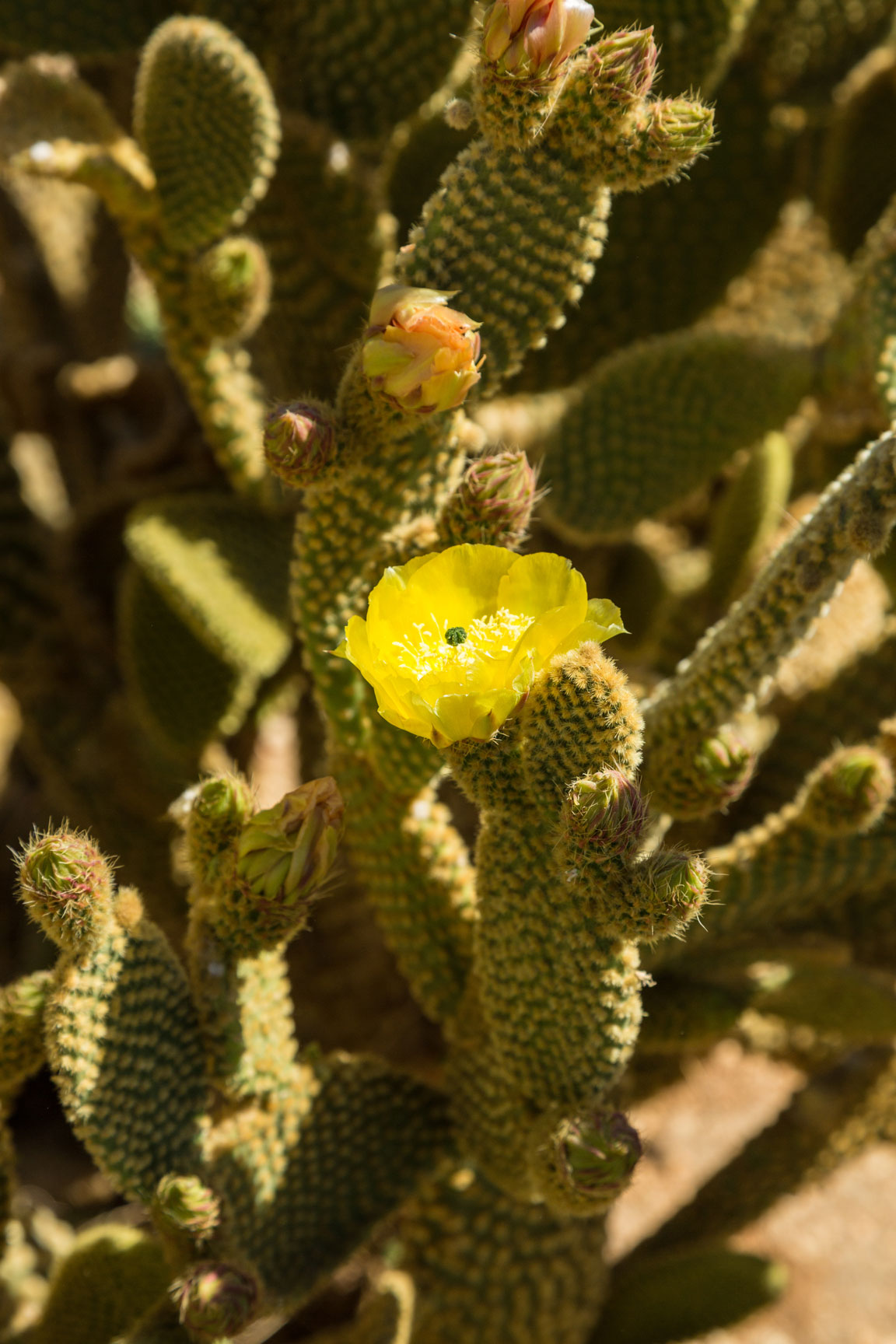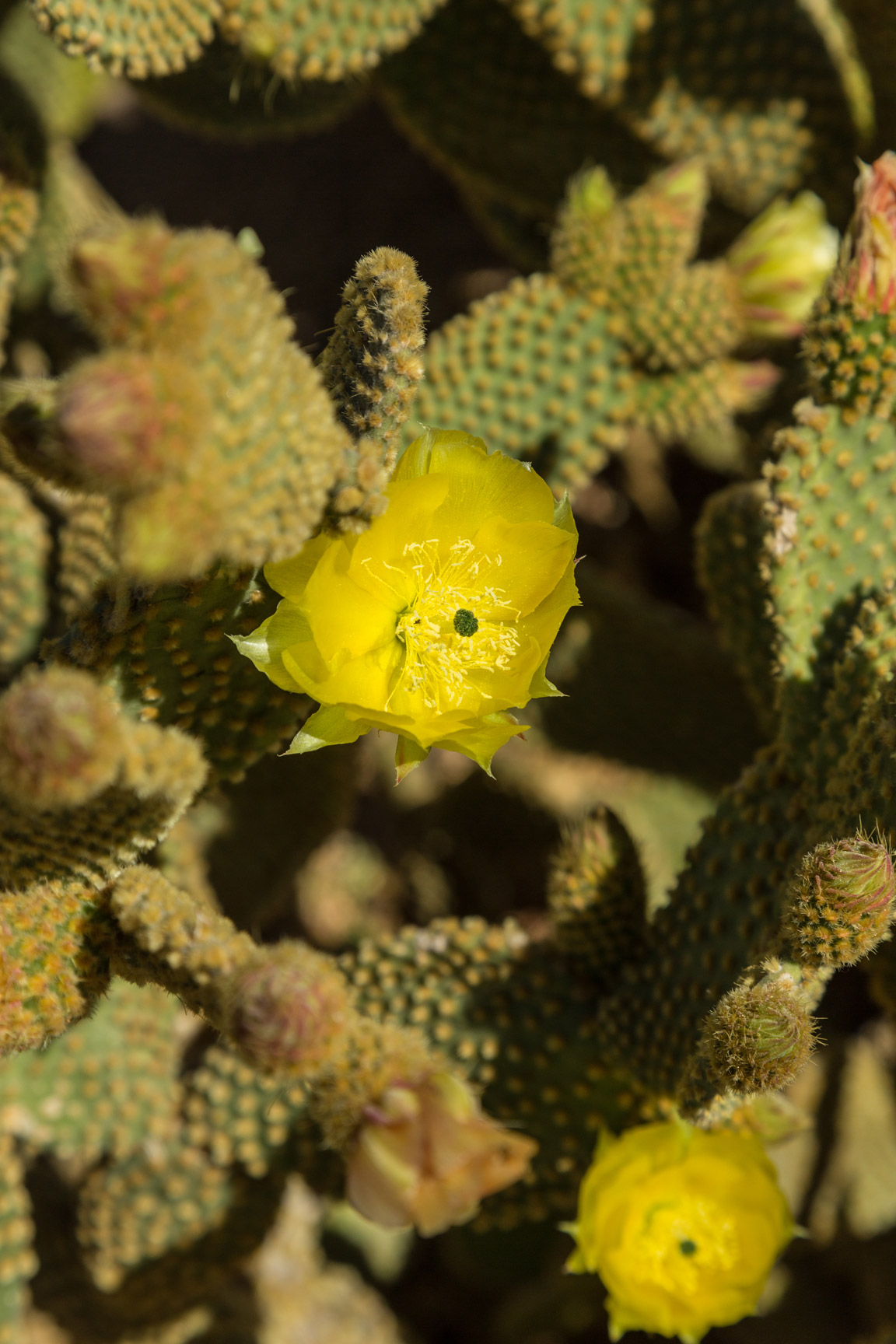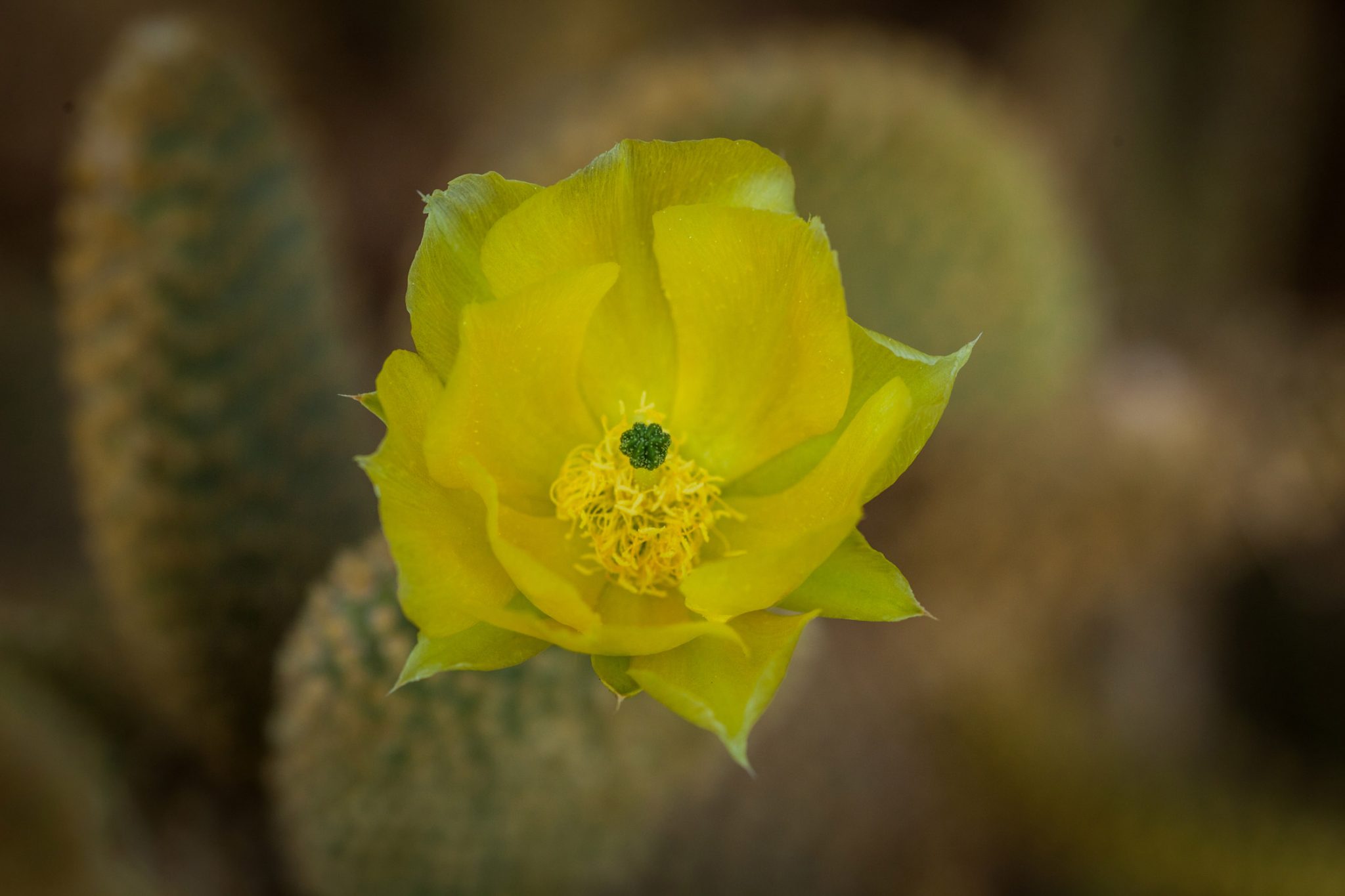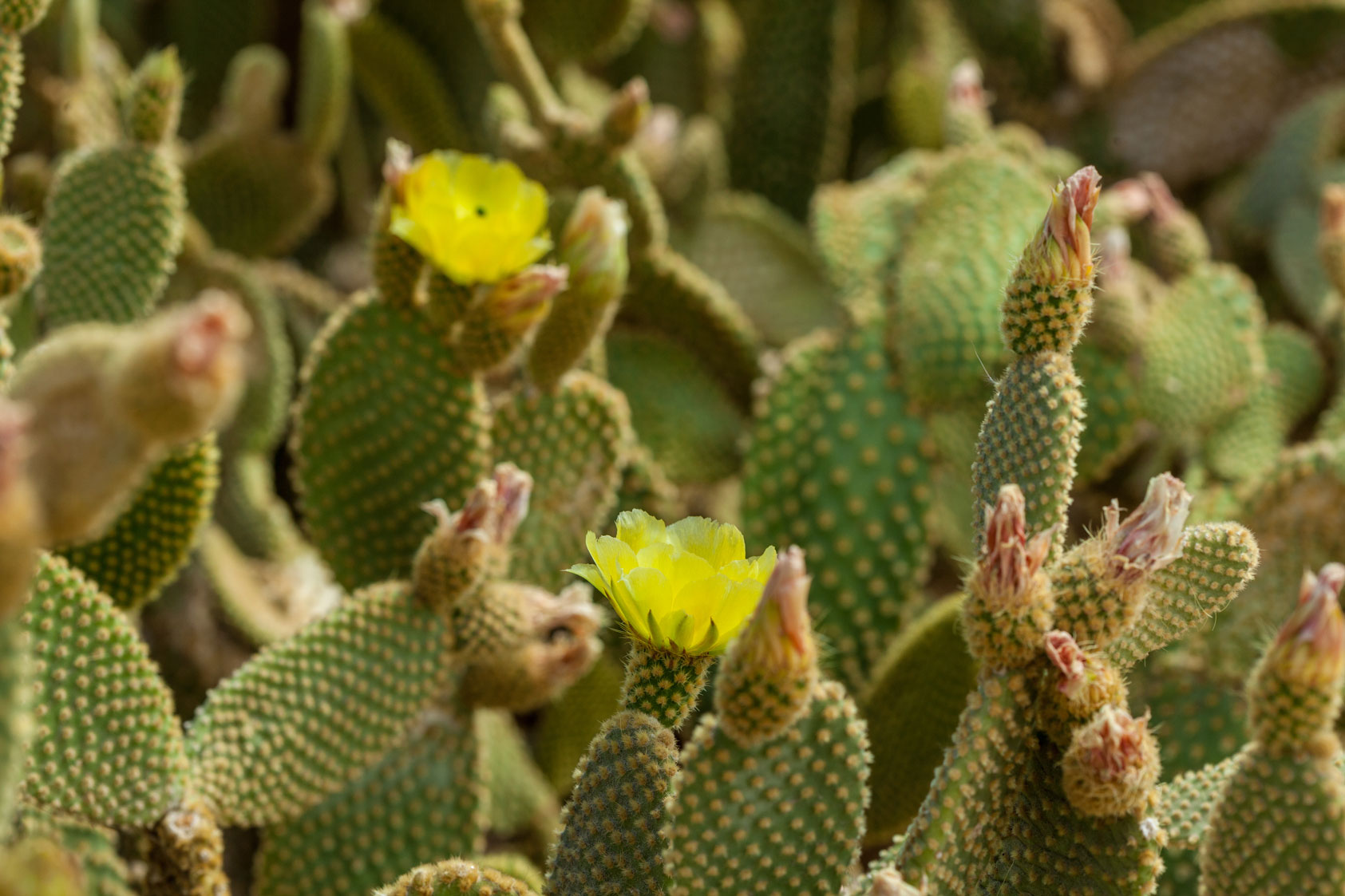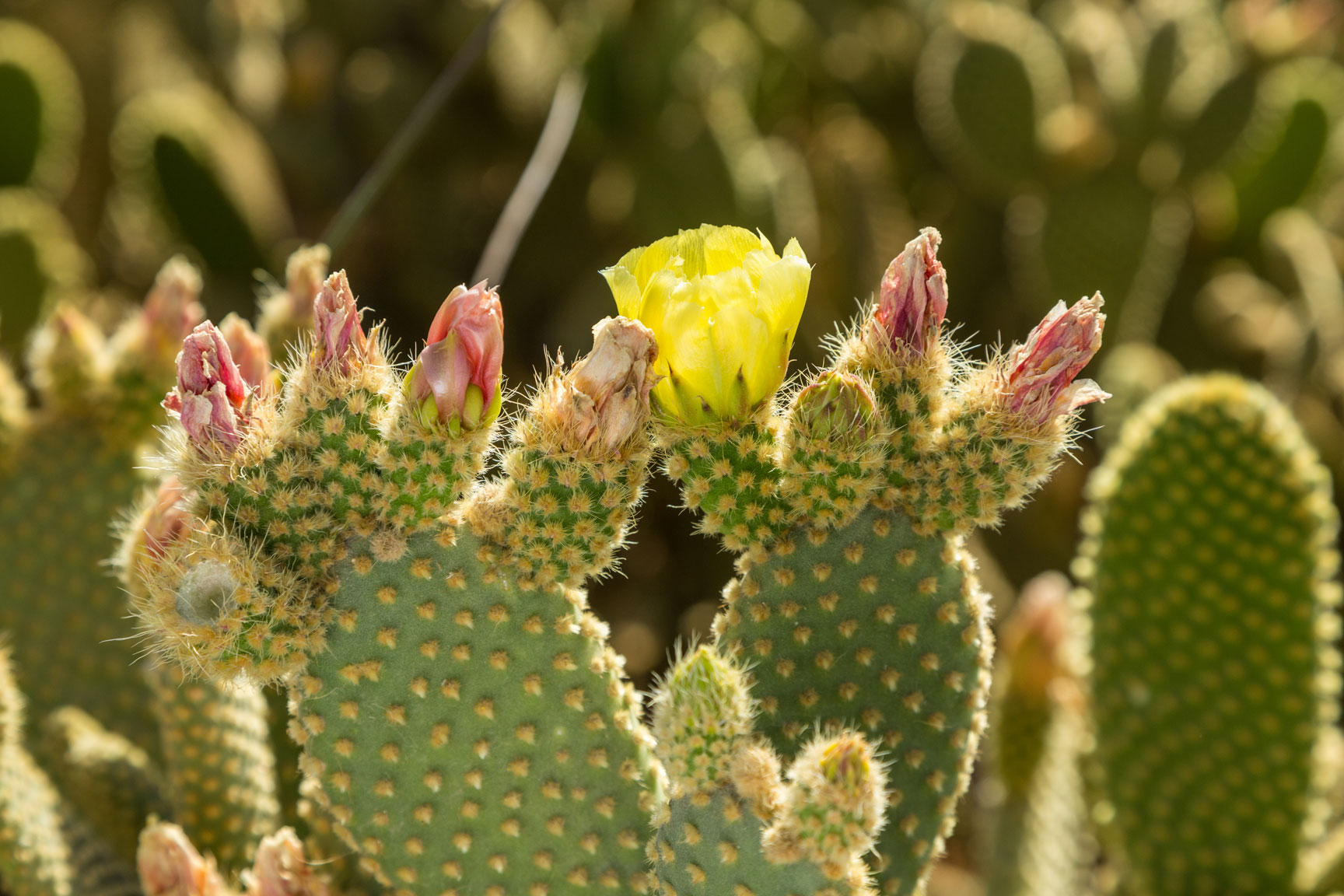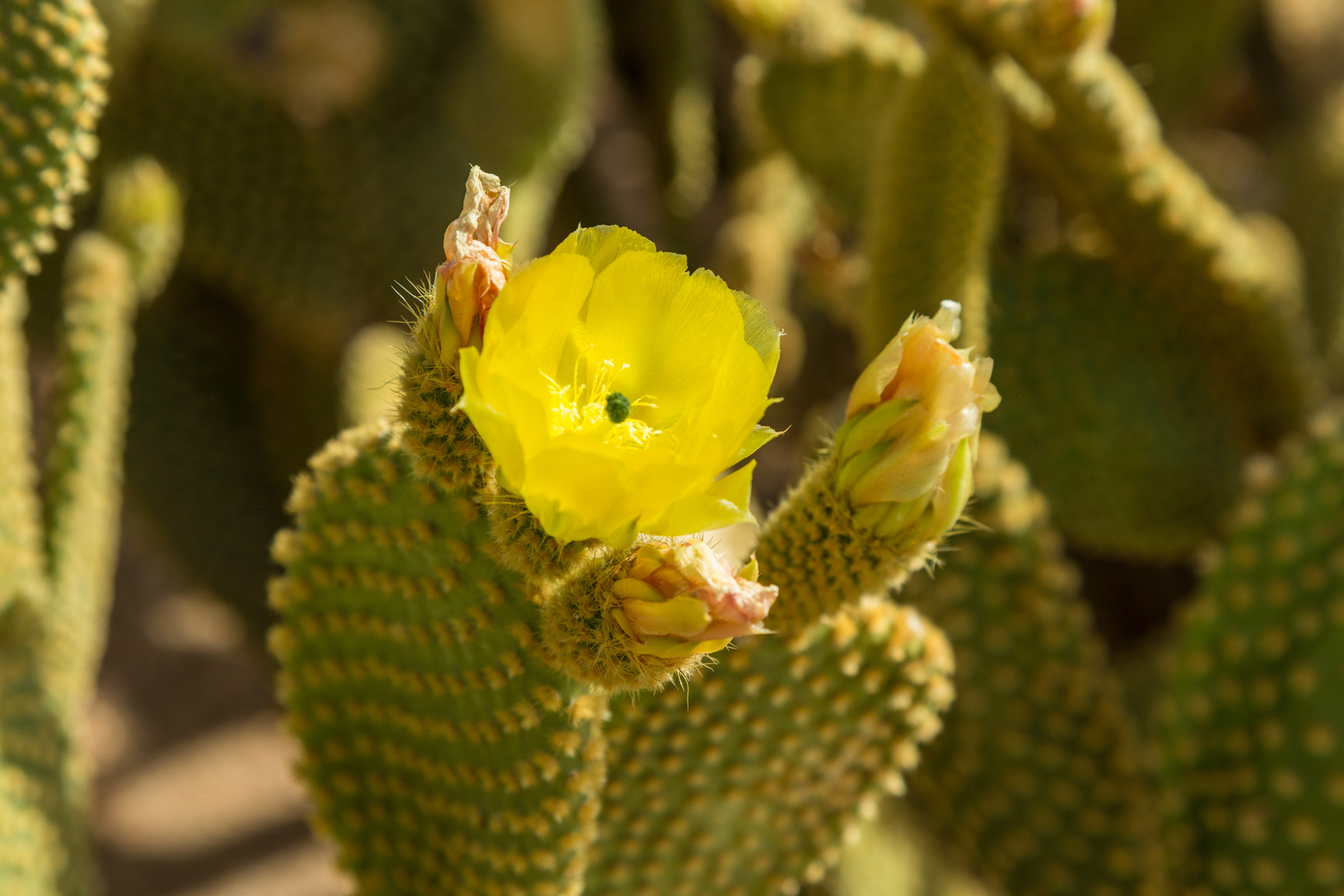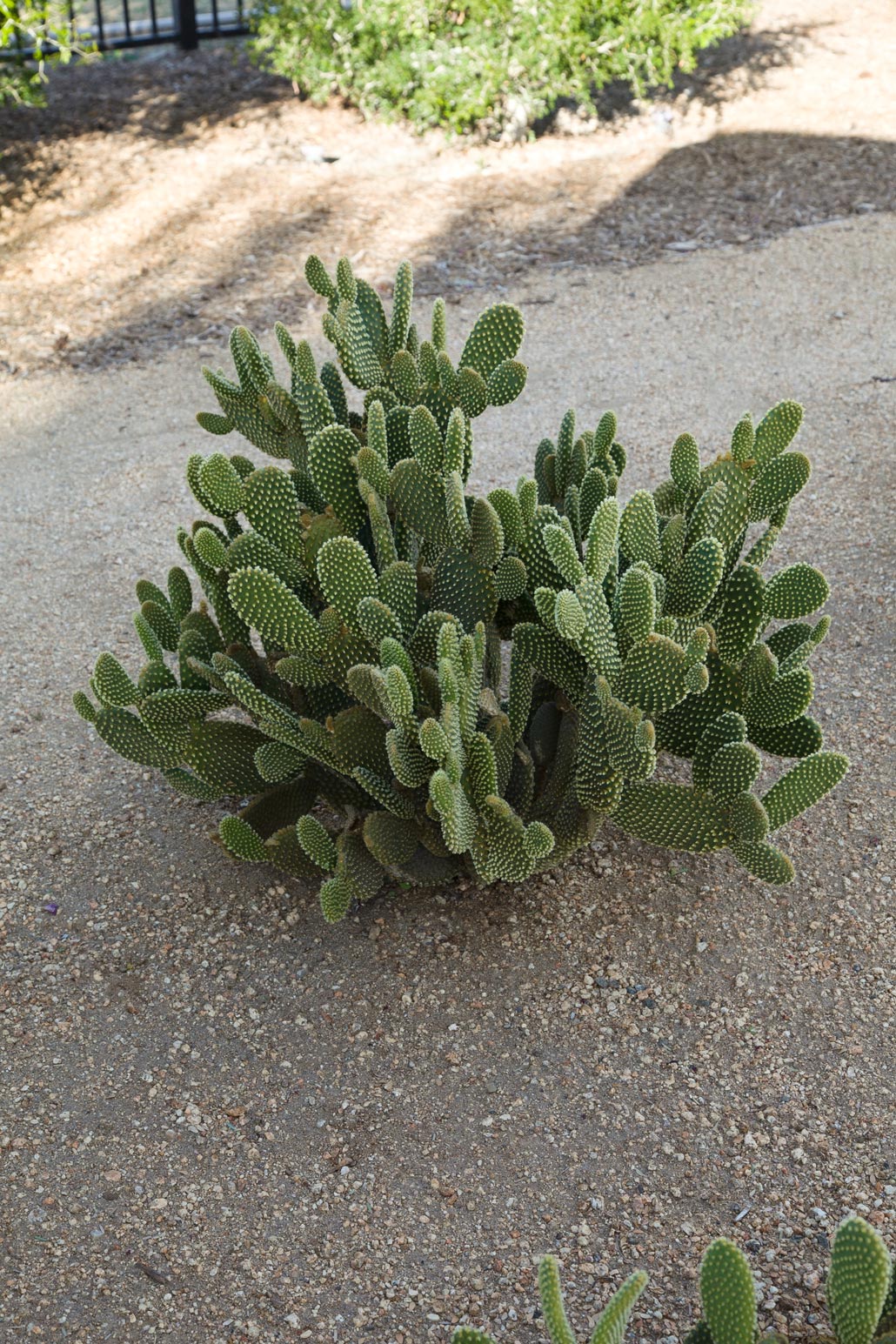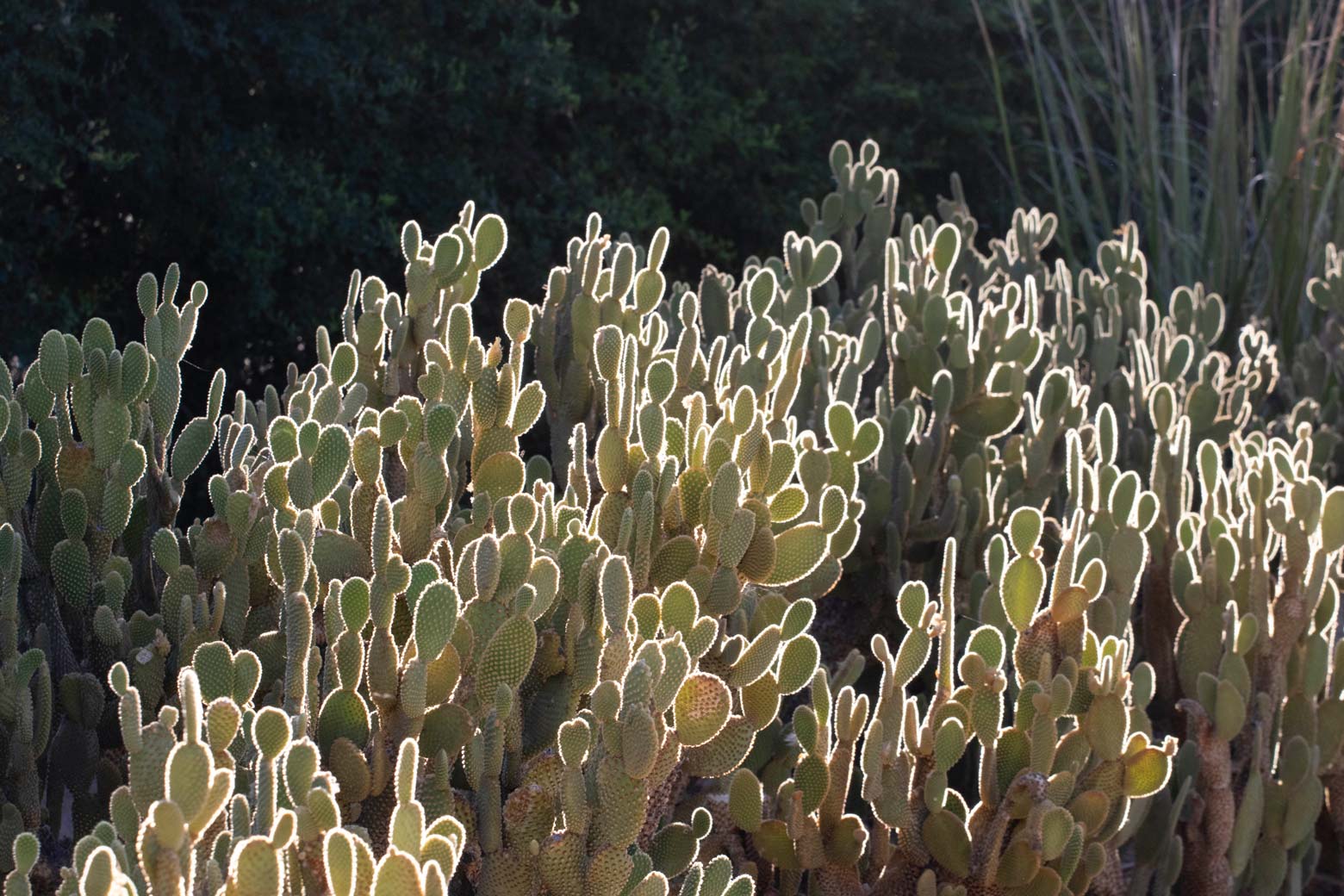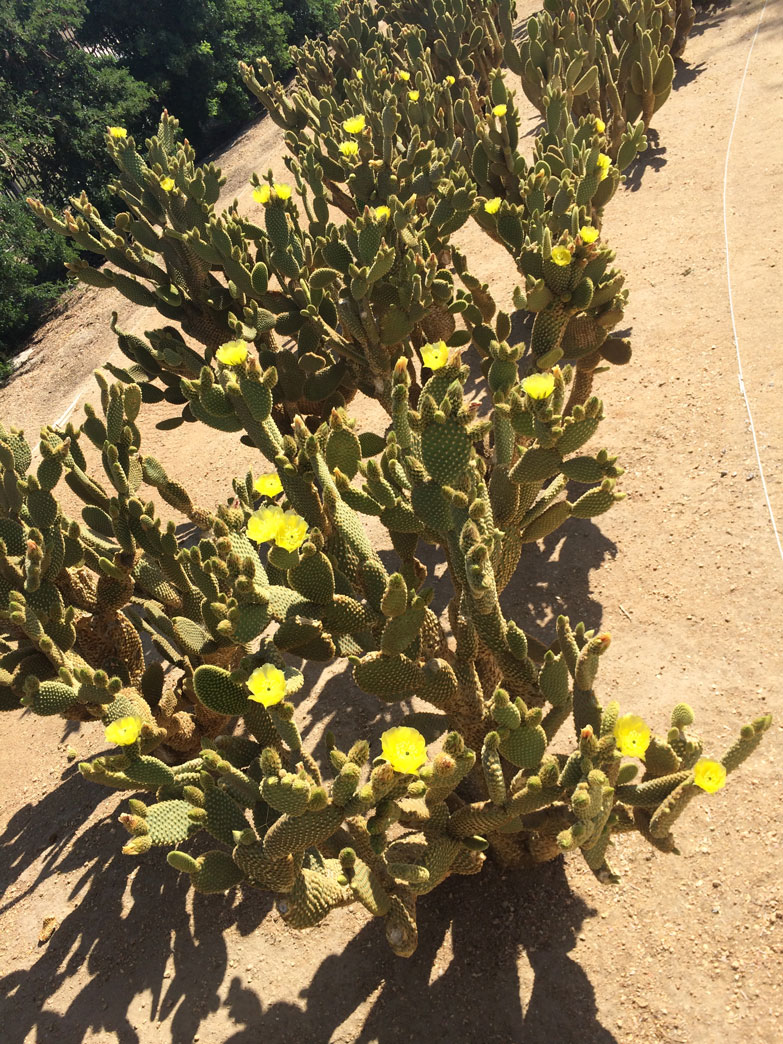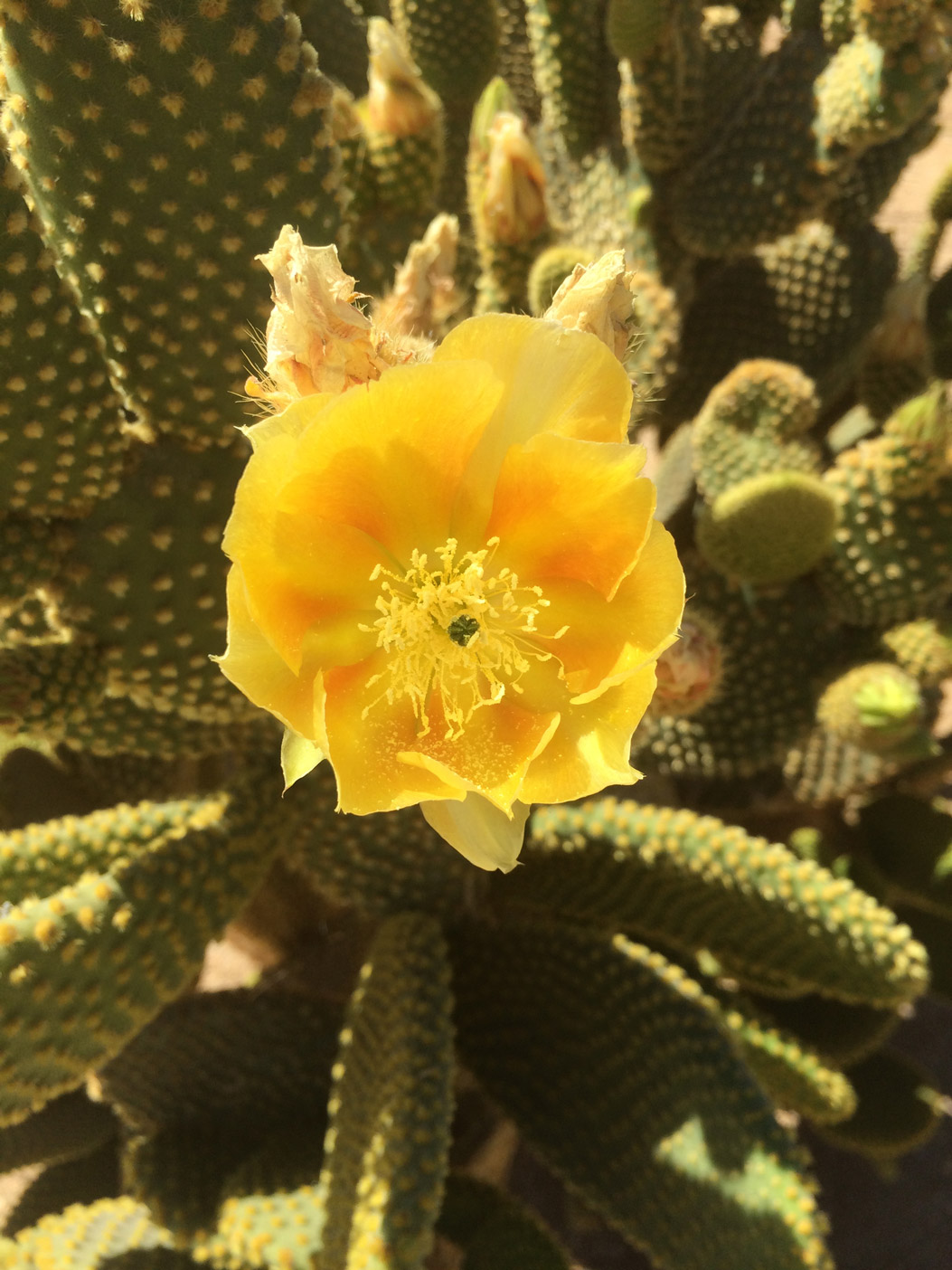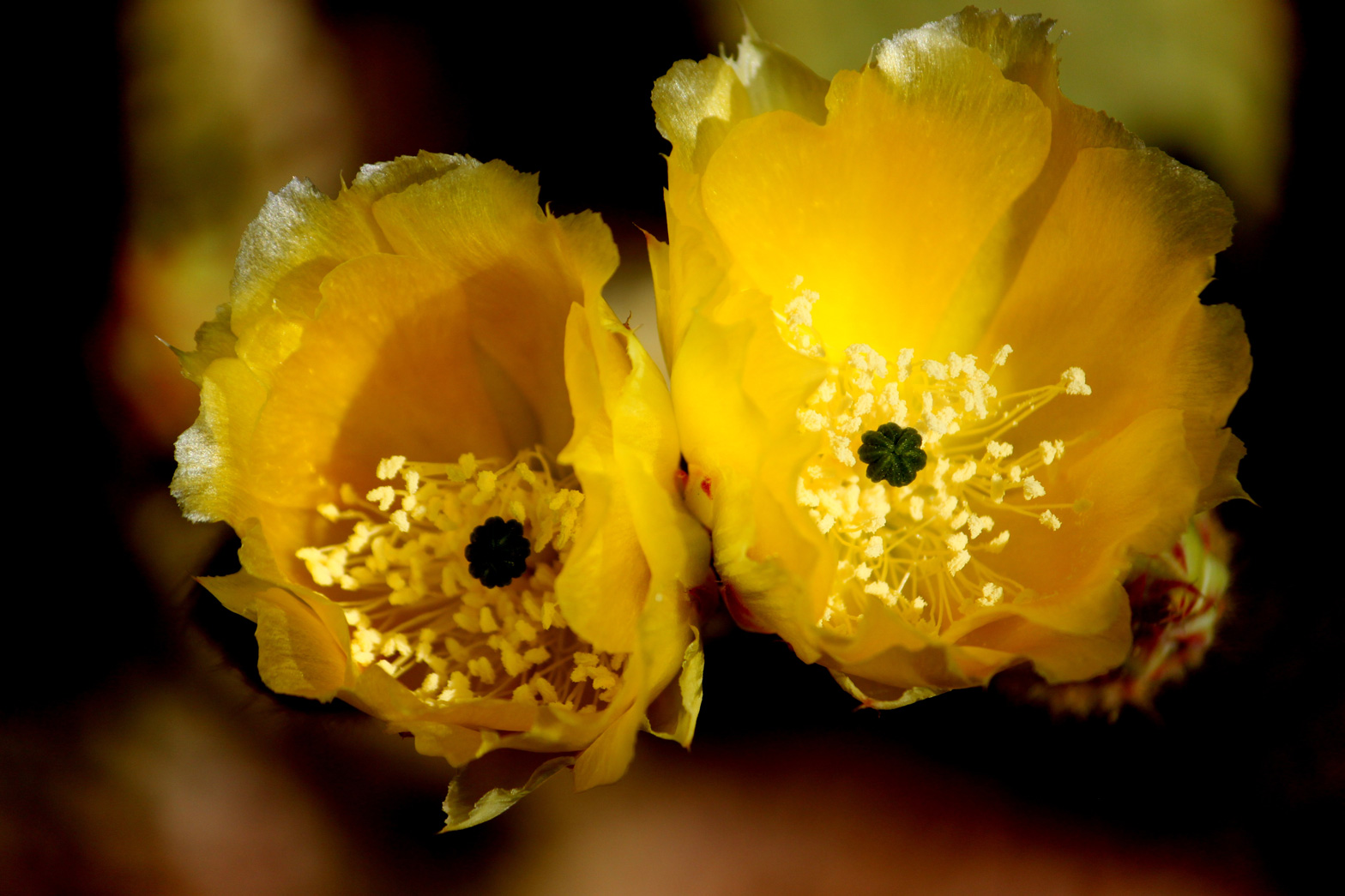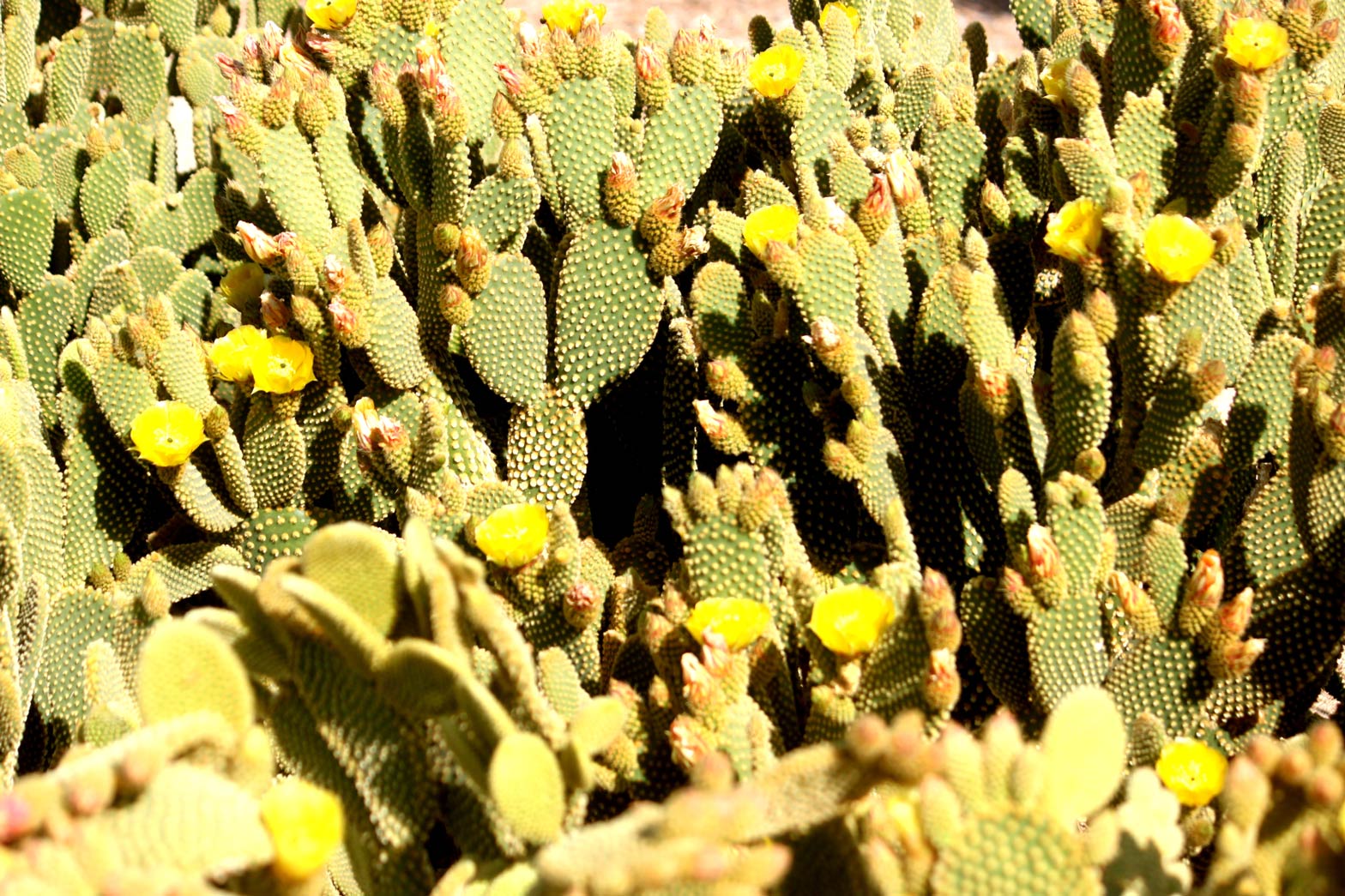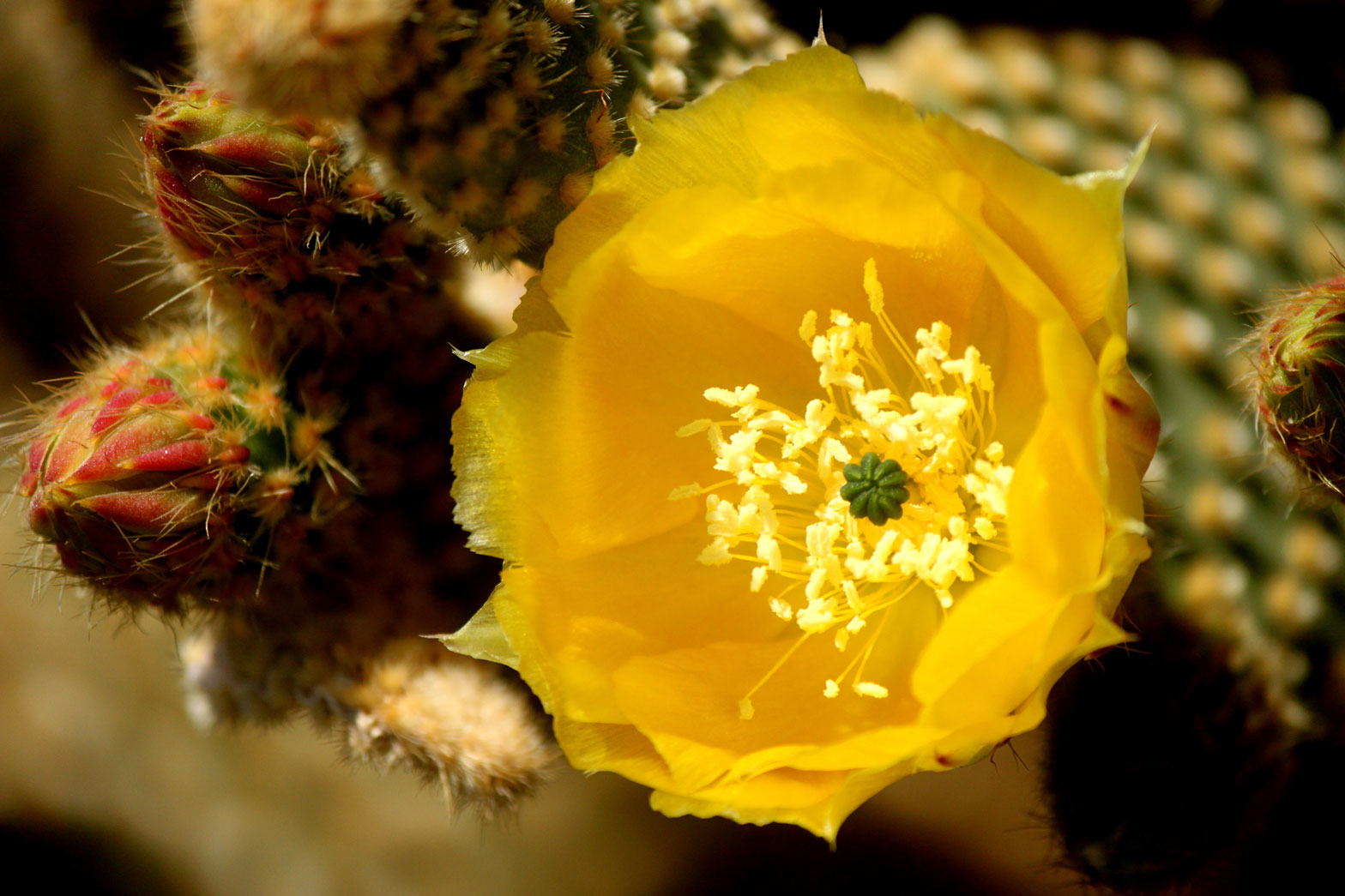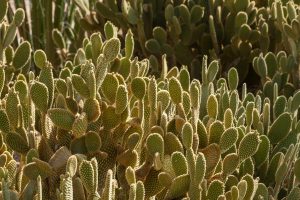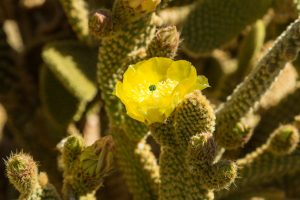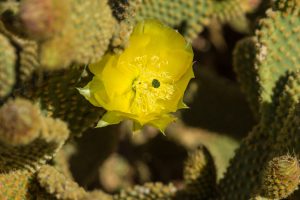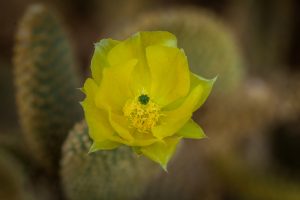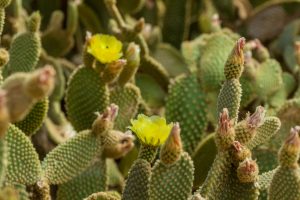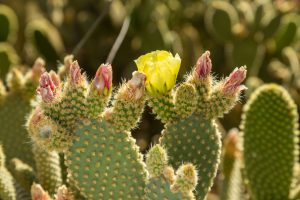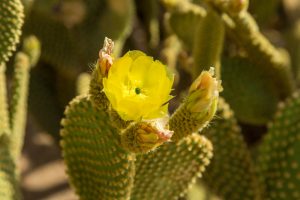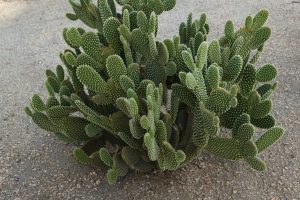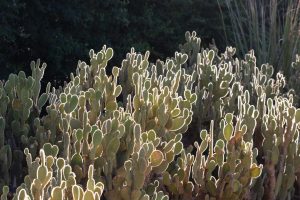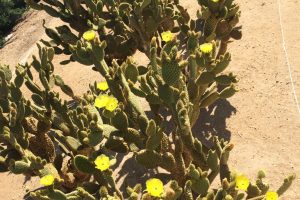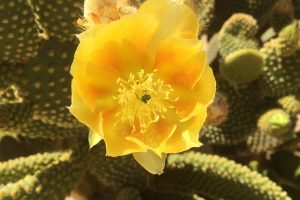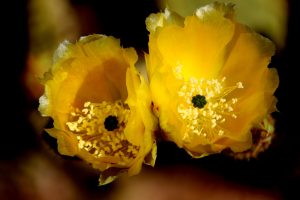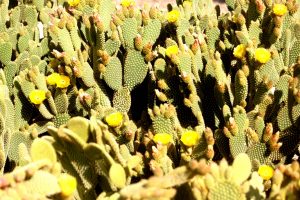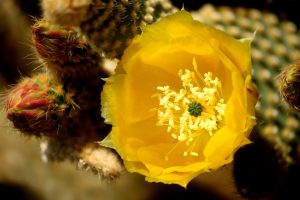Bunny Ear is found along the path that surrounds the wildflower field and in the specimen beds between the café and solar field. It is a beautiful example of the Opuntia genus, displaying small pads with spines placed close together that give it a fuzzy appearance.
With a common name that evokes a soft and cuddly image, Bunny Ear is a very misleading cactus. The fuzzy hairs on its pads are not soft and touchable. They are groups of spines known as glochids, which are small but strong in bite if you mistakenly brush against them. They are delicate and break off easily at the skin’s surface, but their barbed spines, left embedded in the skin, are very difficult to retrieve. The pain from the almost invisible embedded spines can last for days, sending a stinging sensation each time that part of the skin is touched.
REMOVAL OF GLOCHIDS: If you accidentally touch this cactus, do not attempt to wipe off the glochids, as they can attach to other parts of your skin, causing additional wounds. The best removal strategy is duct tape. Though it may not get all the spines, it is an effective remedy for most. Tweezers and a magnifying glass are good tools to remove the rest.
Bunny Ear blooms in the warmer months. Soft yellow cup-shaped blooms will appear, which are a delight to many pollinators. North and South American desert plants have a unique pollination strategy with native bees. Rather than using leg pouches like honeybees, solitary bees roll around in the flower cups, covering themselves in pollen to be distributed at their next stop. Catching them in the act is a delight, reminiscent of a dog rolling in grass.
Native and endemic to northern and central Mexico.
